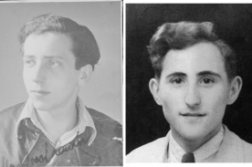 Recently (December 7, 2013), The New York Times ran a piece that asked the age-old question, “How Many American Men Are Gay?” The op-ed piece by Seth Stephens-Davidowitz, which included an interesting map of the US, ventured to estimate this percentage based on a compilation and analysis of “surveys, social networks, pornographic searches and dating sites.” And the number comes in right around five percent gay nationwide.
Recently (December 7, 2013), The New York Times ran a piece that asked the age-old question, “How Many American Men Are Gay?” The op-ed piece by Seth Stephens-Davidowitz, which included an interesting map of the US, ventured to estimate this percentage based on a compilation and analysis of “surveys, social networks, pornographic searches and dating sites.” And the number comes in right around five percent gay nationwide.
What’s striking beyond the raw result is the uneven distribution of gay men around the country. Thus, for example, by some measures California appears to have three times the percentage of gay men as Mississippi. The accompanying map charts the level of “tolerance” of gays by state according to aggregated survey data. Stephens-Davidowitz notes that there’s a very high correlation between the percentage of gays and the level of tolerance by state.
Some of this disparity can be explained by the migration of gay people to more tolerant regions. However, the study concludes that this can only explain a fraction of the difference. The balance is largely due to people’s willingness to come out publicly to a stranger, which is strongly influenced by their social environment.
This point was driven home by another recent survey, which proved that many people are reluctant to come out as gay in a survey. An Ohio State study employed an advanced protocol that guarantees anonymity and compared the results to conventional survey methods. Like Kinsey, the Ohio team asked subjects about past sexual behavior rather than sexual identity. What they found was a dramatic jump in those reporting same-sex activity when anonymity was assured, up by 65 percent (and doubling for self-identified Christians). Men went from twelve to seventeen percent, while women leapt from 24 to 43 percent.
The team cautioned that their sample was not representative but believe that the 1.65 multiplier can be applied to other population studies to compensate for the “veiled” gay percentage. They also found, by the way, that rates of homophobia likewise jump significantly when anonymity is assured, suggesting that, just as some people hide their gayness, others conceal their homophobia. Conclusion: we’ve reached a point where it’s still not totally cool to be seen as gay, but it’s not cool to be seen as anti-gay either.







Discussion3 Comments
I saw this NY Times Article. Very interesting. I’m just wondering, though, why no one seems to ask how many American women are gay. I’d really like to know or at least have someone attempt to answer that question.
Why am I skeptical at the consistently low percentage in these surveys of gay to (so-called) straight men? Five percent is far too low. I realize that, living in NYC, I am certainly around more gay men — open and otherwise — than in many places, but five percent? Sorry, the percentage is far, far higher.
Pingback: Upsize This – LGBT Demographics | theARTofHYPE